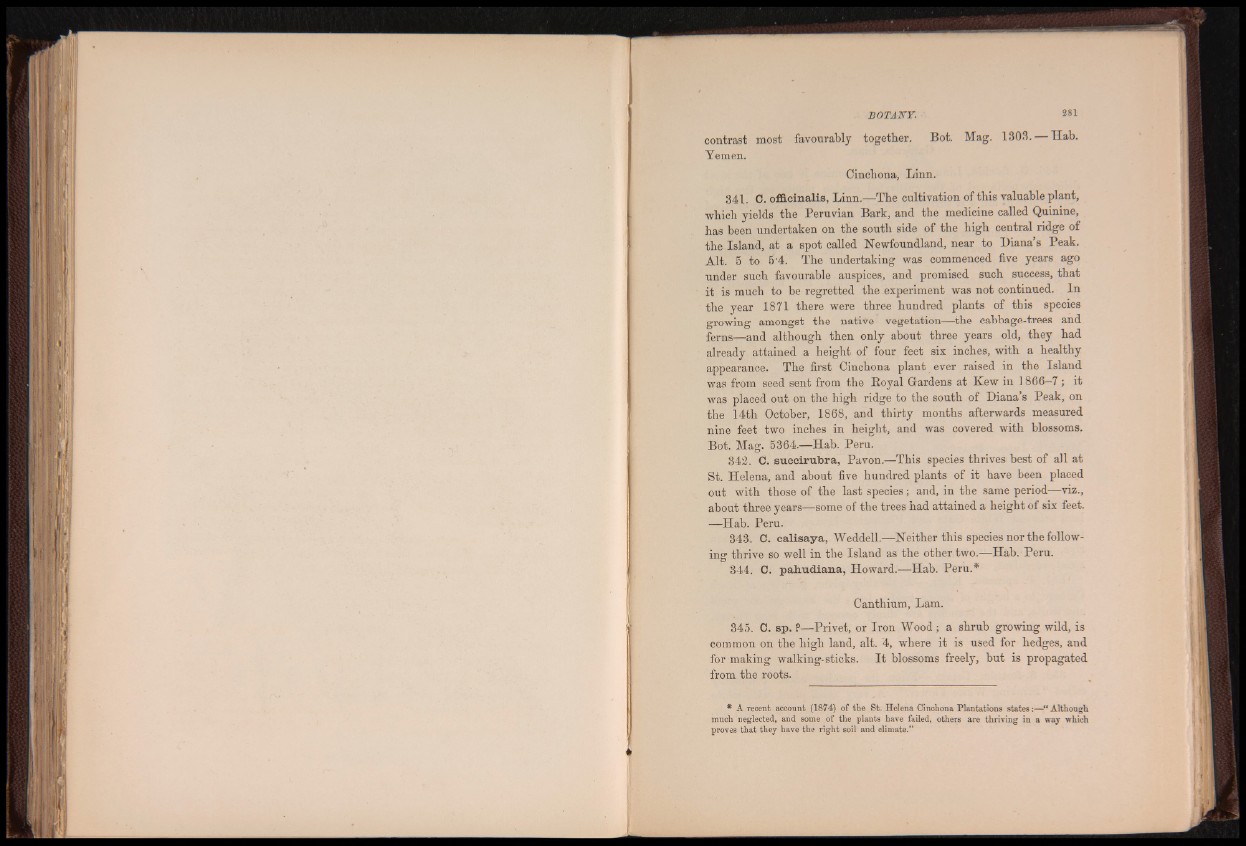
HI
SI r
BO TAN Y.
contrast most favourably together. Bot. Mag. 1303. — Hab.
Yemen.
Cinchona, Linn.
341. C. officinalis, Linn.—The cultivation of this valuable plant,
which yields the Peruvian Bark, and the medicine called Quinine,
has been undertaken on the south side of the high central ridge of
the Island, at a spot called Newfoundland, near to Diana’s Peak.
Alt. 5 to 5'4. The undertaking was commenced five years ago
under such favourable auspices, and promised such success, that
it is much to be regretted the experiment was not continued. In
the year 1871 there were three hundred plants of this species
growing amongst the native vegetation—the cabbage-trees and
ferns—and although then only about three years old, they had
already attained a height of four feet six inches, with a healthy
appearance. The first Cinchona plant ever raised in the Island
was from seed sent from the Royal Gardens at Kew in 1866—7 ; it
was placed out on the high ridge to the south of Diana’s Peak, on
the 14th October, 1868, and thirty months afterwards measured
nine feet two inches in height, and was covered with blossoms.
Bot. Mag. 5364.—Hab. Peru.
342. C. succirubra, Pavon.—This species thrives best of all at
St. Helena, and about five hundred plants of it have been placed
out with those of the last species; and, in the same period—viz.,
about three years—some of the trees had attained a height of six feet.
—Hab. Peru.
343. C. calisaya, Weddell.—Neither this species nor the following
thrive so well in the Island as the other two.—Hab. Peru.
344. C. pahudiana, Howard.—Hab. Peru.*
Canthium, Lam.
345. C. sp. ?—Privet, or Iron Wood ; a shrub growing wild, is
common on the high land, alt. 4, where it is used for hedges, and
for making walking-sticks. I t blossoms freely, but is propagated
from the roots.
* A recent account (1874) of the St. Helena Cinchona Plantations states:—“ Although
much neglected, and some of the plants have failed, others are thriving in a way which
proves that they have the right soil and climate.”